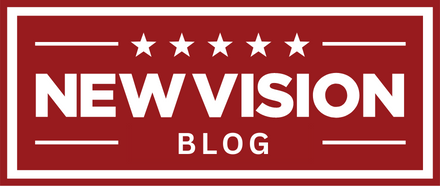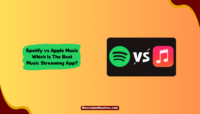Since Spotify has allowed data access to third-party vendors, several amazing tools like Icebergify, Instafest, Color Pallete, and others have gone viral. Out of these, Spotify Color Palette is one of the most trending ways to share your taste in music. Find out how to create your Spotify Songs Palette here.
This trend lets your friends and followers know what type of music you listen to most. Different colours represent different types of tracks. The color that your favorite songs represent will dominate your palette and your friends can easily figure out your taste. Social media is full of such posts recently.
Spotify Color Palette: What Is It?
Spotify Color Palette is a viral music streaming trend created using a third-party tool. The Spotify Palette website is created by an American software developer, Israel Medina, and it categorizes the songs you’ve listened to in the past six months into different colours with meaning.
This provides a unique way to figure out which genres, tracks, and artists influence and decide your listening habits mostly. There are different factors behind the colours in your palette, such as energy, valence, danceability, and more. The core colour is dominated by the factor that affects your musical taste the most.

Launched in 2020, Spotify Palette got viral last year after the immense success of Wrapped 2021. Spotify releases the annual Wrapped once a year. However, users can create and share their Color Palette anytime.
This helped it become more popular among users, who frequently share palettes on social media.
How Does The Spotify Color Palette Work?
Spotify has allowed third-party apps to access user data to integrate additional features. The Color Palette trend was born due to this as a unique way to share your music interests with others. You’ll have to give access to your Spotify profile for the tool to work and create your Color Palette.
When you provide the due access, this third-party website analyzes the data from the last six months and generates a colour palette. It also includes stunning images matching the colour palette from Google’s Art and Cultural database to provide aesthetic results.
In addition to that, you will also see the most played tracks on Spotify for the last six months. However, if you weren’t much active during this time, the results may be inaccurate, and you can’t personalize them.
How to Make Your Spotify Color Palette?
The process is simple if you’d like to join the viral trend of making and sharing your Spotify Color Palette. You must visit the website, sign in using your Spotify account, and let the tool do its magic. Afterwards, you can share your musical colour palette on Twitter, Instagram, TikTok, or anywhere else.
Here’s a more detailed explanation of how to create your Spotify Color Palette:
- Go to the Spotify Palette website (opens in a new tab) in a browser of your choice.
- Now click on “Sign in to Spotify to continue.”

- Next, log in using your Spotify account.

- After that, allow this tool to access your data.
- Finally, generate your colour palette.
The tool will take a few minutes to create your colour palette featuring the most played songs from the last six months and some aesthetic pictures matching your style. Once it’s created, you can take a screenshot and post it on your social media profiles with a witty or catchy caption.
When your friends and followers view your colour palette, they’ll know what types of songs you listen to the most and what the colours represent about the tracks.
What Does The Spotify Palette Result Mean?
Every colour palette that is generated using this tool has a meaning. The different colours in your palette have a meaning. Here are the meanings of the four potential colours from the result of the Spotify Palette:
- Red Palette: You like to play energetic songs mostly.
- Pastel Palette: You like to play energetic & danceable songs mostly.
- Yellow Palette: You like to play happy & cheerful songs (tracks with high valence) mostly.
- Orange Palette: You like to play danceable songs mostly.
These colours are decided based on the psychological meanings behind them. For instance, Red is considered as the color of passion or desire. Hence, it’s often associated with energy. Similarly, Yellow is known to bring a cheerful vibe.

The results will also tell you about the music used to create palettes such as Average Energy, Average Valence, Average Danceability, and others. You will also see a three-bar button with a menu to navigate you to the palette, stunning art, and playlist from the last six months.
Frequently Asked Questions:
A: You can find and see your Spotify Color Palette by visiting this third-party website by U.S. software developer Israel Medina. You must sign in with your Spotify account to create a vibrant art piece featuring your musical interests. It’s free to use.
A: The Spotify Palette tool uses your data of the most played tracks from the past six months to generate a personalized colour palette. The results display your musical interests uniquely, where the dominant colour represents the factor that matters the most to you while listening to songs.
A: No, there’s no such tool as Spotify Palette to generate a personalized colour palette for listeners. Apple doesn’t share user data with third-party vendors to integrate additional features. Meanwhile, Spotify allows sharing and accessing data leading to a series of viral trends.
Final Take:
Spotify continues to grow popular with each passing day. A big role in the music streaming service’s rapidly increasing popularity is played by such trends, which started after the success of Wrapped. Spotify Palette is one of the most joined trends by music listeners worldwide. You can also join it now.
This is how you can make and share your colour palette representing your interests in music. Feel free to let us know if you need help regarding anything here. Also, let us know if you need more quick guides about such viral trends and challenges.
This is Saquib, a technology and social media expert with over 10 years of experience in the industry. With a passion for staying up-to-date on the latest developments and trends in the tech and social media world and as a writer, I have been creating informative and engaging content that is easy for readers to understand and enjoy, also published in several leading tech and social media publications and is a regular speaker at industry events. In addition to my writing and speaking engagements, I also work as a consultant, helping businesses grow with the ever-changing tech and social media niche.





![How To Find Trending Audio on Instagram? [10 Ways] trending songs on instagram](https://www.newvisiontheatres.com/wp-content/uploads/2023/09/trending-songs-on-instagram-200x114.png)
